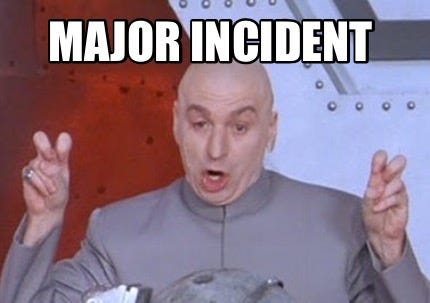Types of Escalations
Many types of issues may be escalated to the MIM/CIM team. Determination of which category the escalation is should occur either in triage/troubleshooting before becoming a major incident candidate or during the priority/severity assessment phase of a major incident candidate.
Having standardized questions will set the expectation to provide this information when escalating, reducing MTTR and unnecessary disruptions.
The Major Incident Candidate may become any of the following:
Major Incident (Break Fix): What is it that the users cannot do, that the customers could do before? [managed by MIM/CIM]
Proactive: CWT to prevent a potential outage or degradation (possibly managed by CIM)
Service Request: What is it that the users cannot do, that the customers could not do before? (no change to existing work environment)
Change Request: What is it that the users cannot do, that the customers could not do before? (change window)
Project: What is it that the users cannot do, that the customers could not do before?
Deployment: May be either a change or a project, due to deadlines may become a break-fix (Major Incident)
BAU: Business as Usual (P3-P5 normal incident, maintenance window)
Understanding these attempts to prevent misappropriation of MIM authority.
Service Request: "If it's not an existing product or feature that is broken or degraded, then we don't manage it."
Change Request: "We don't do change release, we only fix what's broken after failure."
Project: "We are not a Dev Team"
Deployment: "Have you exceeded, or do you expect to exceed, your deployment window? If not then there is nothing yet that we can do."
Now if a change or deployment is broken after its window closes, it will have typically broken what customers could do before and becomes an MI. Same for Projects, although say doing a server refresh project or deployment breaks something else, then we have an MI. I hope this helps with the nuances.
See also:





